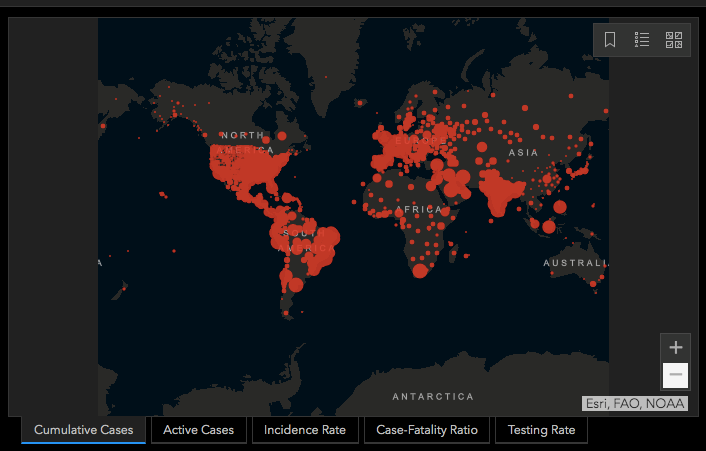
COVID-19 Daily Epidemic Forecasting (Switzerland)
A pioneering forecasting tool for COVID-19 has been developed by Professor Antoine Flahault at the Institute of Global Health of the University of Geneva and in partnership with the Swiss Data Science Center at the ETH and EPFL Universities in Zurich. Prof. Flahault is the founding director of the Institute of Global Health since 2014. He has conducted important research in mathematical modelling of transmittable diseases, most notably on the Chikungunya virus in the Indian Ocean and most recently on COVID-19 1.
The COVID-19 forecasting tool (‘COVID-19 Daily Epidemic Forecasting’) is unprecedented in its reach and functionalities, making it valuable for predicting the global evolution of the pandemic. It analyses data from more than 200 countries, ranging from large states to small island nations, with new countries being added regularly.
The data’s key sources are from the European Centre for Disease Prevention and Control (ECDC), and is released daily at 1pm CET, as well as from the Johns Hopkins University for example. Inputting multiple data sources enables several key functionalities in the tool.
Its primary function is to forecast COVID-19 infections and deaths with the unique prediction time-frame of days. For each country, the daily number of cases and fatalities since the first confirmed case also presents a histogram with trendlines. This creates a visually pleasing representation of growth rates with percentages labels, to allow easier tracking of spikes in the curve.
Another important function of the tool is the daily reporting of R0 (pronounced ‘R-naught’) value – also called basic reproductive values – for each country. R0 serves as an indicator for the contagiousness or transmissibility of an infectious pathogen.2 The measure describes how many people on average will be infected for every person with the disease. It is agreed among experts that a R0 value of <1 is ideal, as it signals the end of the spread of a disease. An outbreak is expected to continue if R0 has a value greater than one.
To find out more, access the forecasting tool here:
https://renkulab.shinyapps.io/COVID-19-Epidemic-Forecasting/
- UNIGE- Website, https://www.unige.ch/medecine/
- Paul L. Delamate et al. Complexity of the Basic Reproduction Number (R0. ) https://wwwnc.cdc.gov/eid/article/25/1/17-1901_article, Last access September 7th